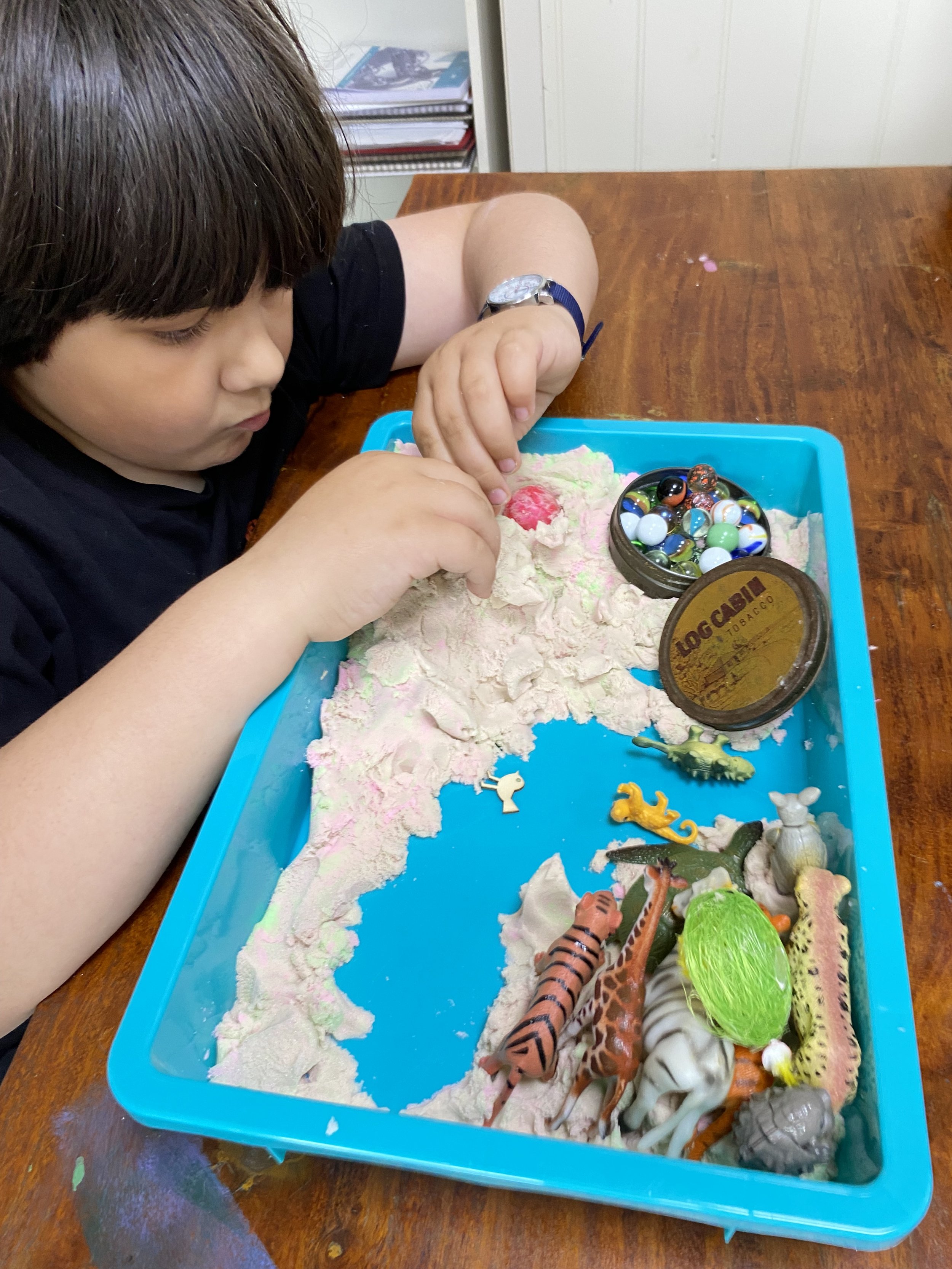Meet Sarah
I am an allied health professional holding the qualification standards of a Masters Degree in Art Therapy, and professional registration with ANZACATA, the peak body of professional Art Therapists in Australia.
I have been working within the NDIA environment since 2016, having an extensive understanding of supporting NDIS participants to achieve therapeutic goals, such as health and wellbeing, self-care and self-management, daily living skills, community participation, social skills and improved relationships.
I have a background in mental health, community development and art. My preferred mediums include charcoal, fabric and natural objects, which I love to find along walks in nature around the beaches, bushland and mountains in the Gippsland area that I live.
I offer online appointments, as well as working with people in their preferred space in Gippsland; a studio, the client home, or in a natural environment. I work with people with various health needs and disabilities as well as those wanting to improve their mental health, self-awareness, relationships and state of wellness.
My Masters of Therapeutic Arts Practice was gained from MIECAT (Fitzroy) https://miecat.edu.au/ an accredited and registered tertiary school of art therapy founded by Dr. Warren Lett.
What is art therapy?
It all begins with an idea, a question of what’s going on for you. Maybe you want to find relief. Maybe you’ve been feeling overwhelmed. Maybe you’d like a creative outlet. Art therapy may be able to help.
Art therapy may be done individually or in a group. You don’t need to be good at art to benefit or participate – the emphasis is on the process of producing artwork, not on the result. Art therapy uses creative expression to inquire into topics that arise. Through noticing, creating and experiencing the art making, participants can become aware of themes, values and patterns that are present. It is then, that a shift can be made to move closer to a preferred way of being. Art therapy differs from traditional psychology, in that the emphasis is on the participant expressing their issues and needs through art (opposed to solely verbal communication).
Generally, a range of art materials will be provided, and a prompt (or question) may be suggested to respond to. From here the process of art making is noticed (for example, are some materials frustrating to use, while others are calming?), and then an invitation to share a description of the art work is made, encouraging key words are used and the responses noted.
Understanding Art Therapy for your child
Art therapy uses the processes of art making to help children address emotional problems, develop interpersonal skills, manage behaviour, reduce stress, and increase self-awareness.
Emotional regulation and coping skills
Through artistic expression, your child can make sense of their experiences, release stress, anxiety and frustration. The process of art making with the guidance of an art therapist, helps them externalise and process their emotions, leading to improved self-control via emotional regulation.
Social Skills
Through small group programs, children will have the opportunity to experience working alongside and with other children. Their social areas of need will be identified and supported within the safe space of the art therapy group, to develop the skills needed for experiences at school, with family and within the community.
Helping Children with Autism and ADHD
Art therapy has shown remarkable benefits for children with autism and ADHD. The structured and sensory rich nature of art activities can help children with autism develop an emotional understanding as well as developing a sensory awareness and strategies for managing challenging situations. For children with ADHD, engaging in supported, creative activities, helps channel excess energy and thought patterns and develop a sense of concentration and mindfulness. Through support from an art therapist, your child will learn how to practice coping strategies and be supported by the routine and consistency of the small art therapy group processes.




